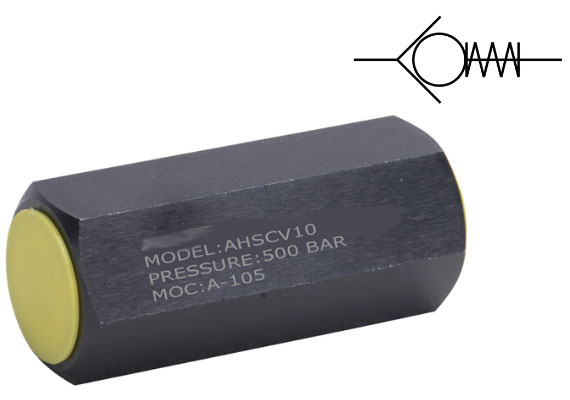Contact : +91-79045 61980 | Email: hydrofitengineers@gmail.com
Hydraulic Non Return Valve
Function, Benefits & Applications
A hydraulic non return valve, also known as a one-way valve or hydraulic check valve, is a most important and mission-critical component in any high-performance hydraulic system. Its core function is straightforward yet strategically vital: allow fluid flow in one direction while preventing reverse movement, which make sure the safeguard to the entire hydraulic circuit from pressure fluctuation, backflow, and component fatigue.
What is a hydraulic non return valve?
The non return valve is a directional gatekeeper in a hydraulic system that’s existence is of vital importance. Located in the large family of hydraulic directional valves, It guarantees the unidirectional flow of pump while keeping the system pressure stable and prevents pumps, cylinders and actuators from damage caused by reverse flow.
How does a non return valve work?
The valve uses a spring loaded Poppet or Ball assembly that is opened by the flowing ahead fluid once forward pressure overcomes the cracking pressure. It is one way flow valve, the mechanism will open when pressure drop or backflow if standstill. It allows optimised load control, circuit protection and continuity in different non-hazardous applications.
What is the use of a hydraulic non return valve?
These valves are used in construction equipment, industrial presses, material handling systems, and injection molding machinery as well as agricultural hydraulics – wherever flow control and system protection is an absolute must (non negotiable).
Why is a hydraulic check valve/ nrv check valve necessary?
It minimizes risk of backflow, water hammer damage and pipe stress, protects equipment investment and system reliability as well as improving overall system efficiency – even leveeing to maintain compliance with today’s performance-driven hydraulic standards.
Is a check valve the same as a non return valve?
Yes. A hydraulic check valve is the same component, often used interchangeably in technical documentation and industrial engineering contexts.

